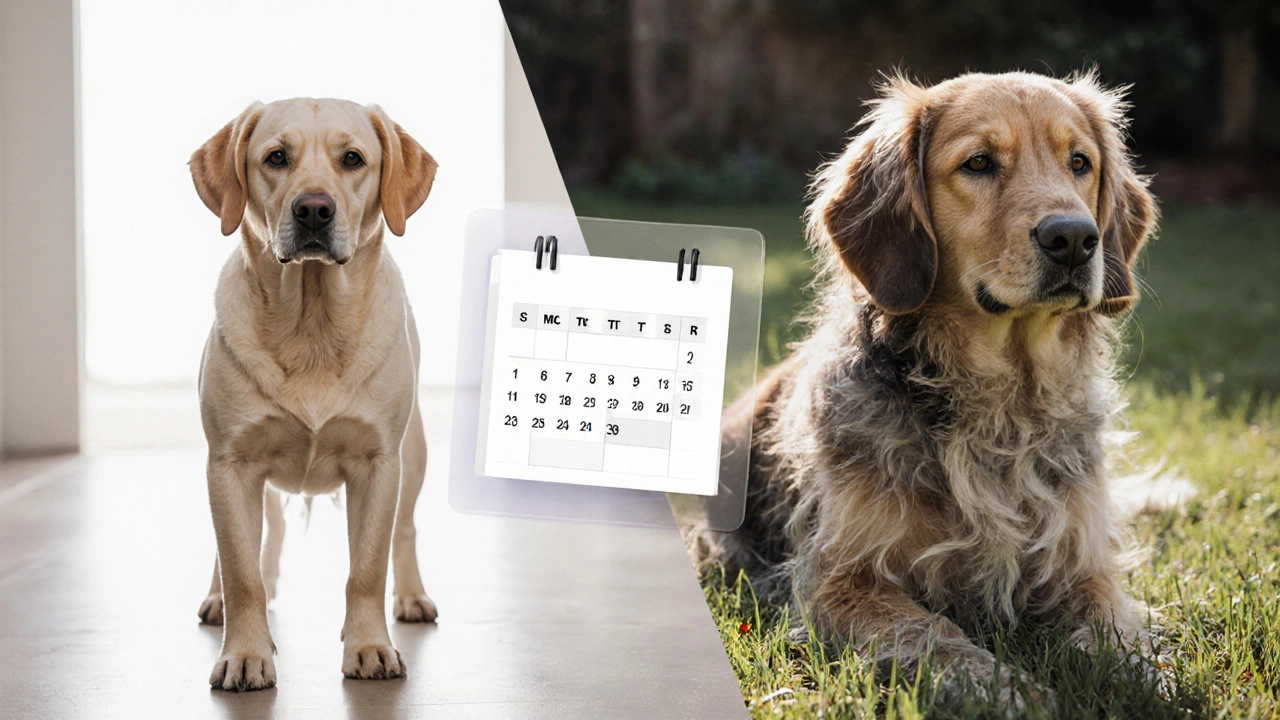Dog Coat Types: Find the Perfect Fit for Your Pup
When you look at dog coat types, the range of jackets made to keep dogs comfortable and safe in different conditions. Also known as canine coats, they include everything from light rain shells to heavy-insulated parkas. Waterproof dog coat, a coat built with a sealed membrane that stops rain and snow from soaking the fur is the go‑to for wet weather walks. Winter dog coat, a thick, insulated layer that traps body heat for cold days protects breeds that struggle with low temperatures. For evening strolls, a reflective dog coat, a jacket with bright reflective strips that boost visibility in low light can prevent accidents. All these options share core attributes: material, fit, and purpose. The material—often nylon, polyester, or Gore‑Tex—determines durability, breathability and water resistance. Choosing a coat requires matching the material to the activity, the climate and the dog’s size. In short, dog coat types encompass waterproof, winter and reflective jackets, each designed to address a specific need while relying on the right fabric.
How to Choose the Right Coat for Your Dog
First, measure your dog’s chest, neck and back length; a well‑fitted coat should sit snugly without restricting movement. A coat that’s too loose can flap and cause chafing, while one that’s too tight can limit stride and increase heat buildup. Next, think about the climate you’ll face. If you live in a rainy region, prioritize a waterproof dog coat with sealed seams and a breathable lining. For snowy or sub‑zero days, look for a winter dog coat featuring down or synthetic insulation and a wind‑proof outer shell. If you often walk at dusk or dawn, a reflective dog coat with high‑visibility panels will make your pet stand out to drivers and cyclists. Material matters too: nylon offers lightweight protection and quick drying, while Gore‑Tex gives premium waterproofing with better breathability. Some owners prefer fleece linings for extra warmth without extra bulk. Don’t forget practical details: adjustable straps, easy‑snap closures, and a leash loop on the collar area keep the coat secure and convenient. Lastly, consider your dog’s breed and activity level—working dogs often need rugged, abrasion‑resistant coats, while small companion breeds benefit from soft, flexible jackets that don’t impede play.
Now that you understand the main categories, the key materials and the fit criteria, you’re ready to browse the collection below. Whether you need a splash‑proof raincoat, a cozy winter layer, or a high‑visibility jacket for night walks, the articles ahead break down each type in detail, share buying tips and point out common pitfalls. Keep these pointers in mind as you explore, and you’ll find the perfect match to keep your dog comfortable, safe and stylish all year round.
How Often Should You Groom Your Dog Each Year?
Learn the ideal number of grooming sessions per year for any dog breed, factors that affect frequency, and how to create a practical grooming calendar.
